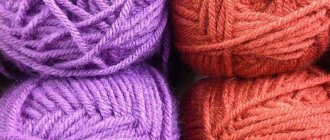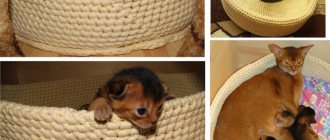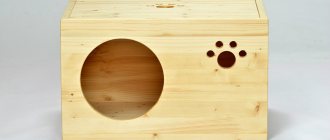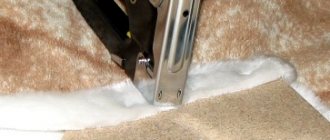Hello, dear readers!
I am glad to welcome you to the pages of the “Cat City” blog.
Whatever you can do for your beloved four-legged animals! After all, they love us openly and devotedly. Especially when you meet their inviting gaze eye to eye: your heart melts, there is a smile on your face, and you are ready to take your pet to the ends of the earth, and not just on a daily family walk.
But for safe, comfortable hikes and travel, your pet needs special equipment with a leash.
Of course, everything you need for Murky promenades around the city and forest parks can be bought at a pet store or made to order. But there is another option: a DIY cat harness.
What is a harness
A cat harness is a device that is attached to the animal's neck and back and connected to a leash. Straps are important because it is dangerous to tie a leash to a cat's collar. Unlike dogs, cats have a soft throat, and too much pressure on the throat area can cause internal injury or suffocation.
The cat feels great in a harness
Types of harnesses:
- H-shaped. They have a short strap that lies between the shoulder blades with loops sewn to both ends. The upper loop is smaller and is attached around the animal’s neck, the second is larger and clasps the body under the front legs;
- eights. Identical to H-shaped harnesses: they have a short top loop and a large bottom loop. The only difference is that there is no straight belt between them; in the figure eight they are connected to each other by a small jumper, externally forming the number 8;
- vests. Shaped like the letter H using durable fabric. They are attached to the neck and body under the front legs of the animal;
- V-shaped ones have 2 loops that are attached behind the cat’s front legs, on the neck and torso. The loops are connected by a long strap that runs across the cat's chest. From the front, the harness looks like a V.
Difference between a harness and a collar
The main difference when comparing harnesses to collars is that they reduce the risk of neck injury. They also cause fewer restrictions for breeds that are prone to breathing problems or tracheal collapse.
Important! Collars are attached to the neck, which can cause suffocation of the animal in certain situations, while a harness for a kitten or cat, due to several belts, distributes the load over the back and chest.
How to make a harness with your own hands
House for a cat: options for how to make it yourself
If you decide to make a cat leash with your own hands, below are step-by-step instructions for creating it in the form of a vest with Velcro on the chest.
Step 1. Take measurements of your pet: neck circumference, near the shoulders, length from the neck to the middle of the chest (straight line), chest circumference around the middle of the chest. If you visualize these three parameters, you will get two circles (one larger than the other) and a straight line between them.
Measuring a cat to create a vest
Note! Instead of a zipper or buttons, it is more convenient to use Velcro to close the vest. It allows for minor changes in the size of the cat and provides reliable protection of the vest around the body, even when the leash is pulled.
You can find and download a vest template online or make your own. For the second option, you will need the dimensions of the cat, paper, a pencil, a ruler or measuring tape, and possibly an eraser. The harness will be assembled in two parts, but since all the parts are the same size and shape, you will only need to draw one design.
Vest diagram
Step 2. Create a diagram. The paper to be used should be at least the same width as the circumference of the animal, plus a couple of centimeters, and the same height as the length of the cat, also taking an extra couple of centimeters. You will need a sheet of paper at least 45 cm wide and 20 cm high for the drawing to fit completely. If there is no material of this size, you can glue 2 sheets of paper. Newspapers, posters or something similar are suitable for work.
The exact shape and design can be anything, but each part measured on the cat must be the same size as in the drawing.
Important! Since you will need to add Velcro to the two pieces on the chest, you will need to make sure that both sides of the fastener are touching each other.
To make sure you have trimmed the fabric enough, add 1cm to the perimeter of the design. This space will be the distance between the very edge of the fabric and where the stitches will be.
Need to leave some free space
Step 3. Cut out the template. Once it is completed, it should be cut out and tested on the cat. If any parts do not fit, you need to draw a new template and try again.
Step 4. Preparing the necessary materials.
For a vest according to the diagram above, you will need thick fabric (outside) and lining (inside). You will also need any protective fabric, nylon straps, a D-ring, thread (the same color as the fabric) and sew-on Velcro.
Note! You can use regular fabric as a lining.
Required Items
Any type of fabric can be used, but lightweight cotton is easiest to sew with. An alternative for the outer part of the vest can be fleece. For the lining, you should consider satin.
Protective fabric is usually used to strengthen or thicken another type of fabric. It should have the same weight or less than the fabric that will be the main one.
The nylon webbing should be at least as long as the middle circle of the vest. The thicker the strap, the more difficult it will be to sew with a regular needle.
The D ring needs to be wide enough to fit the nylon tape through. For example, if you buy a D-ring that is 1.5cm wide, the nylon webbing should also be 1.5cm wide, and vice versa.
To make a vest, you will need a sewing machine, an iron, a tape measure, scissors and straight pins with a ball at the end. If you don't have an iron or sewing machine, you can try asking friends and family if they can borrow these items. You can sew a cat harness with your own hands if you can’t buy a sewing machine. But it will not be as strong as if it were sewn on a sewing machine.
Necessary equipment
Step 5. You need to cut out the fabric, lining and front protective fabric. Next, you should lay everything out on the table vertically in front of you and attach the diagram using straight pins. The fabric should be cut to the size of the drawn diagram plus 1 cm of seam allowance.
You need to cut the fabric according to the silhouette of the design
For convenience and to reduce time, you can put a piece of fabric, a lining on it and a protective material on top of each other and secure the pattern through all three layers. If these 3 layers are too thick (a pin won't easily go through them with the design), you will have to do them separately.
Step 6. Sewing the parts. You need to start sewing from the wrong side, folding the edges so that all the seams are inside the vest. Correctly align all sections of the fabric and sew the future vest along the entire perimeter. Then you need to turn it out and iron it.
It is better to sew all parts on a sewing machine
Step 7. Add a ring to the strap at the back of the harness where the cat's spine will be. But before sewing the nylon straps, you should make sure that the D-ring is threaded with the rounded edge facing out. To make this part durable, use a sewing machine to sew nylon straps to the back of the vest. Please note that some nylon straps can be quite thick.
Important! If you decide to use a very thick webbing, your sewing machine must have a suitable needle.
How to attach a ring to a vest
Step 8. Sewing Velcro to the jacket. Make sure the Velcro is non-adhesive. While sewing, glue can get on the needle and ruin the internal workings of the sewing machine. It is important to remember that they will overlap each other: one part of the Velcro should be on the inside of the fabric, and the other part should be on the outside.
At the end, Velcro is sewn to the vest
Step 9. Attach a rope or elastic band and pull a little to check the strength of the sewn ring. The harness and vest for the cat is ready.
Ready-made vest on a cat
Popular models - characteristics, price
- Harness for cat ROGZ ReflectoCat S;
- Dezzie Kitten Kit;
- Hunter Smart cat harness Stripes;
- Trixie harness for kittens;
- Trixie harness with leash for large cats.
Cat harness ROGZ ReflectoCat S
The polyester model comes complete with a leash (1.8 m). Side fasteners made of acetate plastic open easily and do not damage the animal’s fur.
The carabiner connecting the harness to the leash opens freely with strong tension - this is important if the pet is stuck on a tree or fence. The degree of ease of opening the lock is adjusted depending on the weight and activity of the animal
The product has a bright design and is equipped with a bell. The width of the strips is 1.1 cm.
- Plus: a reliable carabiner with an opening adjustment system.
- Disadvantage: high cost.
Price: 1188 rub. More details about the product
Dezzie Kitten Kit
The kit is designed specifically for kittens. The kit includes a harness (23x43 cm) and a leash for cats (120 cm). The width of the straps is 0.8 cm.
The product is made of pink nylon. A pattern in the form of a cat silhouette is applied along the entire length of the product. The material from which the model is made does not rub the kitten’s skin, and the convenient side carabiners do not injure the animal’s fur.
The harness is connected to the leash with a metal carabiner, which guarantees a reliable connection.
- Plus: cheap.
- Disadvantage: preliminary training of the animal is necessary.
Price: 394 rub. More details about the product
Hunter Smart cat harness Stripes
Very light nylon harness with a leash made of multi-colored material. Suitable for cats and small breed dogs.
Plastic sliders on the slots adjust the dimensions of the product and ensure reliable fixation in the selected position.
The length of the leash is 1.2 meters. Suitable for cats with chest circumference – 22-46 cm, neck circumference – 22-33 cm.
- Plus: adjustable size.
- Cons: narrow straps.
Price: 740.02 rub. More details about the product
Trixie harness for kittens
A comfortable and reliable harness for kittens made of nylon from a well-known German manufacturer. The product is sold complete with a leash. The length of the leash is 1.2 meters. The product evenly distributes the load from the leash onto the kitten's chest and shoulders.
The adjustment system allows you to adjust the size of the harness to your pet. Product dimensions: 21×32 cm. Strap width – 0.8 cm.
- Plus: does not rub the skin and does not injure the coat.
- Disadvantage: Replacement is necessary when the animal grows.
Price: 423 rub. More details about the product
Trixie harness with leash for large cats
The model is designed specifically for large breed cats. Product material – nylon. The sizes are smoothly adjusted using special plastic sliders on the slots. The side carabiners are made of high-quality plastic, are easy to unfasten and do not injure the cat’s fur and skin.
The leash is connected to the product with a reliable metal fastener. Suitable for animals with a chest circumference of 34-57 cm. The width of the stripes is 1.3 cm.
Price: 675 rub. More details about the product
How to properly put a harness on a cat
After you have selected the most comfortable harness, you need to follow the step-by-step recommendations on how to put a new item on your animal. Dressing methods differ depending on the type of harness used.
DIY dog harness: step-by-step instructions
Eight:
- You need to figure out how the figure eight harness should fit on the cat. The smaller loop will slide over the cat's head and does not need to be undone. The large loop should go around the cat's chest and be undone.
- Thread the animal's head through the small loop. The place where the loop connects to the connecting strap should be just above the cat's shoulders. Using a small loop above the cat's head, you need to move the strap so that the middle of the figure eight lies on the back between the shoulder blades.
- Connect a large loop around the cat's body. You need to take the ends of the larger loop and draw them under the chest. Check for kinks and straighten them, then fasten the buckle.
- If the loop is too small to fit on your cat's chest, you will need to increase the length slightly using the sliding adjustment on the harness.
- Check the fit of the straps: 2-3 fingers should fit between the harness and the cat.
Important! Adjustments should be used to lengthen or shorten the loops so the cat feels comfortable and secure.
Cat in eight
H-harness:
- Find the short strap (rear) and hold it. Place the cat's head through the smaller loop. Lower the straight strap to the cat's shoulder blades. Unfasten the large loop and wrap both ends around the animal’s body under the front paws. Fasten the loop.
- Observe the main condition: the harness should fit snugly, but be loose enough so that you can insert 2-3 fingers between it and the cat. When putting it on for the first time, it is worth adjusting the size to fit the cat.
Cat in an H-harness
Harness-vest:
- Unfasten the Velcro on the vest and place it so that the upper part is on the neck and the lower part is under the front paws. Fasten the Velcro under the cat's neck and belly.
- If the animal is cramped, adjust the pressure using Velcro.
V-harness:
- Lay the device on the floor, spreading the loops for the cat's paws as far apart as possible.
- Place the cat over it so that its paws are in the side loops.
- Raise the harness and close the clasp on the animal's back.
Cat in a V-harness
Little tips for beginners
- Make the first test ammunition, that is, cut it out of simple fabric that is no longer needed in everyday life. For example: from an old duvet cover.
- Try on a trial version, correct any errors, and then take into account all the corrections in the real version.
- Do not sew all the way around the edge of the harness, but leave 2-3 cm of the seam without stitching. Turn the product right side out through the hole left. Smooth out the edges, iron the finished harness, and carefully sew up the turning area by hand.
How to train a cat to wear a harness
DIY cat scratching post: options at home
Not all cats are going to tolerate a harness right away, especially Scottish breeds. There are methods you can use to teach your cat to wear it. If they don't work or your cat is stressed by it, you should stop and consult your veterinarian before continuing to train her.
- Let the cat recognize the harness. You need to put it nearby and allow the cat to independently become interested in the new object and sniff it. You can give her a treat while she does this. You should associate positive things (like treats) with the harness to make her less afraid.
- You need to put the harness on the cat, but do not fasten it. You should pet her and encourage her with gentle words to keep her in a good mood. This should be done several times.
- After she gets used to feeling something on her back, you need to put on a belt and connect the parts with Velcro while praising her. Some cats may just walk around as if nothing is wrong, others may try to fight with the harness or pretend they can't move. You should leave the belt on for a while. Repeat this several times, increasing the time the cat stays in the harness.
- When the owner feels that the cat is ready, you can attach a leash, go outside with her and let her walk.
Important! It is necessary to monitor and control the cat while it is outside, especially when using the harness for the first time.
Features of making ammunition for kittens
The accessory for kittens is made using the same technology as for adults. However, for a small animal, slightly less materials will be needed, and they themselves should be softer and more pleasant to the touch. For example, the base of the harness can be made smaller in width, 1.5 cm, from velor or fleece.
The advantage for the owner is that it is much easier to accustom him to the street than an adult cat. You can start as early as 3 months of age, when all vaccinations have been done and an antiparasitic course has been completed. In order for the baby to calmly accept the first walk, you need to introduce him to the equipment in advance: let him smell it, put it with toys, put it on at home for 15 minutes. This way, the experience of going outside for the first time will bring him less stress, and he will not feel constrained in an unfamiliar harness.
Cost of a leash for a cat in a pet store
The range from which you can choose a leash for kittens and cats is quite wide in any pet store. The harnesses come in a variety of colors that can be adjusted. You can also find cat harnesses made from different materials: decorative knitted or reflective. Prices are influenced by the type of harness and brand recognition. The cheapest ones can be found for 150 rubles. Vests are a little more expensive. The average price for all types is 300 rubles*
The variety of harnesses is impressive. Designed for the safety of animals, they make walking with them calm for the owner. You can buy leashes at a pet store, order online, or make a harness for your beloved cat with your own hands. But it is worth remembering that the main factors when choosing this device should be the convenience and comfort of the animal.
*Prices are as of August 2022.
Protects against scratches
Have you bought an expensive scratching post and even regularly trim the stubborn person’s claws? Really nothing helps? Okay, in that case, try dressing the cat in boots.
caterville.wordpress.com
This idea works especially well when a small child grows up in the house, every minute trying to escape from parental attention and pull the kitty by the tail. Even if the cat wants to rebel, the slippers will prevent him from causing serious damage. And this is certainly better than special stickers or surgical declawing, the dangers of which we wrote about in this article.











